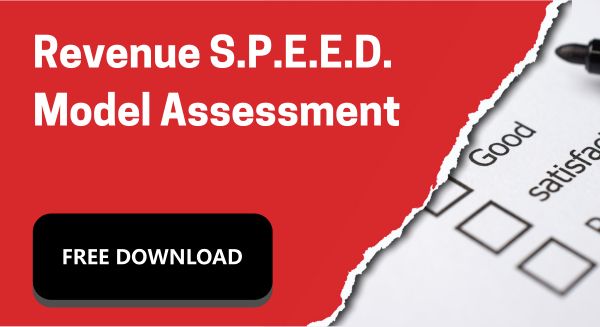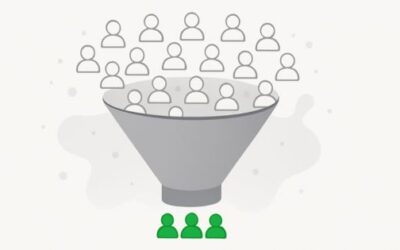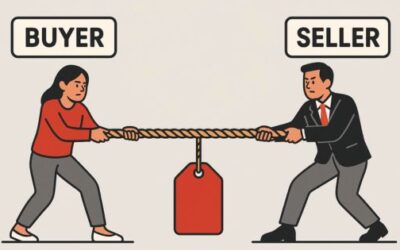Enablement is often measured by completion rates or content usage. Did the team attend the training? Did they download the deck? But those metrics don’t show whether anything changed in the way reps sell.
The Revenue S.P.E.E.D.™ Model Sales Enablement Assessment is designed to fix that. It’s the only diagnostic that scores actual execution across three layers: skills, opportunity management, and forecasting.
It shows whether your methodology is being applied in real deals, whether managers are reinforcing it, and whether buyer input is shaping pipeline, forecasts, and coaching.
If you’re trying to improve win rates, deal size, or sales cycle length, this is the framework to benchmark what’s working and what’s broken.
>> Assess Your Enablement Team <<
What the Sales Enablement Assessment Measures
The assessment scores how well your sales team executes across three areas:
- Skill application in live selling
- Opportunity management and qualification
- Forecasting based on buyer-confirmed data
Each item is tied to a specific behavior, manager activity, or system process that impacts revenue.
The Revenue S.P.E.E.D.™ Framework for Sales Enablement Evaluation
The Revenue S.P.E.E.D.™ Sales Enablement Assessment breaks execution into three layers: Skills, Opportunity, and Forecasting. Each layer maps to a specific part of the sales process and includes clear evaluation criteria tied to performance outcomes.
Skills looks at whether reps are applying a defined methodology, asking the right questions, and uncovering buyer input data that drives deals forward.
Opportunity evaluates how reps and managers handle live opportunities—qualification, deal strategy, CRM accuracy, and deal inspection.
Forecasting reviews how pipeline and forecast data is built, scored, and validated based on what buyers have actually shared.
The framework also inspects the level of integration across these layers. It assesses whether reps and managers are applying these practices consistently and whether sales leadership is using this information to manage performance at scale.
This structure helps companies isolate which part of the system is underperforming and why.
>> Overview of the Revenue S.P.E.E.D. Model <<
Key Assessment Categories and Questions
The S.P.E.E.D.™ Assessment uses a detailed scoring model to evaluate execution within each layer. It highlights where gaps exist and which areas need development, reinforcement, or deeper integration. Each category includes diagnostic questions tied to observable behaviors.
Skills Layer
- Does the team follow a documented sales methodology in live deals?
- Are reps trained to uncover problem, impact, and root cause?
- Is there a defined certification process with observable evaluation moments?
- Do managers coach based on specific selling behaviors tied to the methodology?
Opportunity Layer
- Is qualification based on buyer input data?
- Are CRM fields mapped to key elements of discovery: current state, future state, and gap?
- Is there a consistent deal review process that evaluates opportunity health and execution?
- Does the team score deals based on real buyer information?
Forecasting Layer
- Are forecast calls tied to what buyers have shared?
- Does the organization use historical data and active opportunity scores to guide forecast accuracy?
- Are managers inspecting the pipeline regularly to catch risk early?
- Is the forecasting process aligned with the way reps qualify, manage, and update opportunities?
Each question in the assessment ties to specific outcomes, win rate, deal size, and sales cycle length, so teams can measure progress over time.
Signs Your Enablement Program Is Falling Short
Execution issues show up in revenue performance. When enablement isn’t driving behavior change, the evidence is in the pipeline, forecast, and sales metrics.
Watch for these patterns:
- Buyer engagement drops after the first call or demo.
- Reps can’t explain why the buyer should act or what the cost of inaction is.
- A significant number of deals remain in the CRM well beyond your average sales cycle.
- Deal sizes are consistently below target.
- Opportunities enter the forecast without verified problem, impact, or motivation data.
- A high percentage of late-stage losses are attributed to “no decision” or “stuck with the status quo.”
- Forecast accuracy drastically fluctuates.
These are not isolated rep problems. They signal systemic breakdowns in how your team is enabled, coached, and held accountable.
How to Score and Prioritize Areas for Improvement
The Revenue S.P.E.E.D.™ Assessment uses a six-level scoring model to evaluate each capability across the sales organization. Each level reflects how deeply a behavior or process is embedded into daily execution.
Scoring levels:
- Don’t Have – No process or behavior in place.
- Have but Team Rarely Uses – Exists, but adoption is inconsistent or ignored.
- Have and Team Uses with Management Enforcement – Adoption depends on oversight.
- Team Uses on Own – Consistently applied without prompting.
- Team Uses with Development Support from Management – Reinforced through coaching or structured development.
- Team Uses with Development Support from Management and Is Integrated into All Sales Management Layers – Fully embedded in process, coaching, and performance management.
Each capability maps to a measurable outcome: win rate, deal size, or cycle length. The scoring system helps teams isolate what’s missing, assess how it affects revenue, and prioritize the next area of focus.
The goal is full adoption across every category, but not every gap carries the same weight. The most important outcome of the assessment is identifying where improvement will create the biggest impact and which areas can be fixed fastest.
For example, a team with strong training completion but low CRM documentation might score high on Skills but low on Opportunity, pointing to a manager reinforcement gap. That’s where coaching and inspection need to focus first.
Next Steps After Your Sales Enablement Assessment
Once scoring is complete, the next step is building an action plan. Start by reviewing which gaps are tied to stalled deals, low conversion rates, or inconsistent forecasting. These are your highest-leverage areas.
From there:
- Group issues by layer: Skills, Opportunity, or Forecasting.
- Identify quick wins: capabilities that are close to adoption but need support or enforcement.
- Assign owners across enablement, management, and ops to drive execution.
- Define how each fix will be reinforced: through training, coaching, systems, or inspection.
- Set benchmarks for progress using the same scoring model used in the assessment.
The plan doesn’t need to cover everything at once. Focus on two to three priority improvements, then inspect their impact before expanding. Small changes, reinforced consistently, are what shift execution across a team.
Free Sales Enablement Assessment Tool
If you’re ready to see how your team stacks up, the Revenue S.P.E.E.D.™ Model Sales Enablement Assessment is available as a free diagnostic tool. It walks you through each capability across Skills, Opportunity, and Forecasting, using the same six-level scoring model outlined above.
What you’ll get:
- A complete execution score across every layer of your sales process
- Visual breakdowns to identify weak points and potential quick wins
- A framework for building your improvement plan
You can use the tool independently or bring in our team to help you score, interpret, and prioritize your next steps. Either way, it’s built to give you a real-time view of what’s working and what’s not.




0 Comments